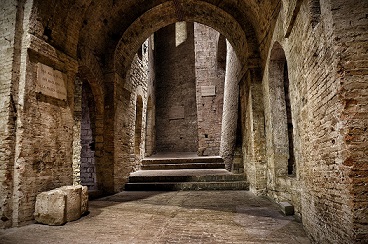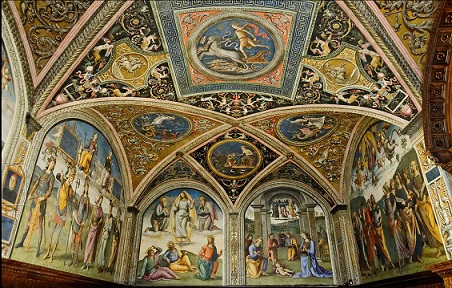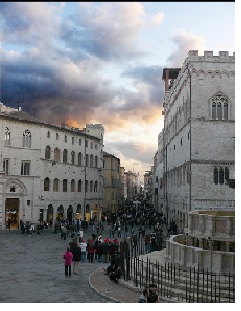About Perugia

Perugia is the capital of the Umbria Region (the Green Heart of Italy), and is located in Central Italy. The town is of Etruscan origin and contains more than 160,000 inhabitants.
The Acropolis of Perugia (about 490 m a.s.l.) has been selected by the Etruscan people for the topographic arrangement on two contiguous hills, Colle del Sole and Colle Landone, and for the water resources.
The oldest urban center is enclosed by walls dating from the 3rd Century BC, that are themselves incorporated into a medieval fortification (14th Century).
The latter fortification encompasses the five villages (or districts) that have developed along the five main hill ridges towards the surrounding suburbs. This expansion took place in five directions, corresponding to the five Etruscan doors and has given the city a stellar shape that Renaissance architect Leon Battista Alberti compared to the fingers of a hand.
 Its rich history is well represented by the works of art housed in the most representative cities, and the numerous monuments that characterize the urban profile of its historic center. Among these monuments is first and foremost the Fontana Maggiore, built in the 13th Century. After construction of the aqueduct through which water was channeled to the center of the city, and which is still accessible today. In the Piazza IV November there is the Cathedral of San Lorenzo, which was completed during the 15th Century. The Palazzo dei Priori built between the 14th and 16th Century, is now the Town Hall of the Municipality of Perugia, and contains the National Gallery of Umbria, the region's most important museum. Here visitors can admire works of artists such as Pinturicchio, Perugino, Pietro della Francesca, Gentile da Fabriano, and other work of arts covering a time span between the 13th and 19th Century.
Its rich history is well represented by the works of art housed in the most representative cities, and the numerous monuments that characterize the urban profile of its historic center. Among these monuments is first and foremost the Fontana Maggiore, built in the 13th Century. After construction of the aqueduct through which water was channeled to the center of the city, and which is still accessible today. In the Piazza IV November there is the Cathedral of San Lorenzo, which was completed during the 15th Century. The Palazzo dei Priori built between the 14th and 16th Century, is now the Town Hall of the Municipality of Perugia, and contains the National Gallery of Umbria, the region's most important museum. Here visitors can admire works of artists such as Pinturicchio, Perugino, Pietro della Francesca, Gentile da Fabriano, and other work of arts covering a time span between the 13th and 19th Century.
 Among the many other architectural works worthy of mention is Rocca Paolina, a fortress built by Pope Paul III in 1540, at the end of the Salt War, in which Perugia fought against the Papal State imposing taxes on the importation of marine salt. Only one wing remains of this monumental building, designed by Sangallo the Younger, one of the greatest military engineers of the 16th Century. The area under the building, the major underground citadel, is still accessible, however, having become one of the symbols of the city. It is now crossed by a path of escalators leading from the main bus terminal up to the city center.
Among the many other architectural works worthy of mention is Rocca Paolina, a fortress built by Pope Paul III in 1540, at the end of the Salt War, in which Perugia fought against the Papal State imposing taxes on the importation of marine salt. Only one wing remains of this monumental building, designed by Sangallo the Younger, one of the greatest military engineers of the 16th Century. The area under the building, the major underground citadel, is still accessible, however, having become one of the symbols of the city. It is now crossed by a path of escalators leading from the main bus terminal up to the city center.
Perugia is the home of one of the oldest universities in Italy, founded in 1308, as attested by the Papal Bull issued by Pope Clement V certifying the birth of the Studium Generale. In addition to the University of Perugia is the University for Foreigners, founded in 1925, being the oldest university in Italy addressed to foreigners, and which specializes in the teaching and diffusion of the Italian language and culture worldwide.
In this highly suggestive scenario, and rich history, art and science surroundings, many cultural activities take place, making Perugia one of the most dynamic and attractive Italian cities. The best globally-known initiatives range from international music festivals (Umbria Jazz) to promotion of economic activities and crafts (UmbriaLibri), and from local confectionery production (Eurochocolate) to large conferences in the field of media and information (International Journalism Festival), and science (Perugia Science Festival or The Isle of Einstein).
Start enjoying the beauty of Perugia watching a video of the city
